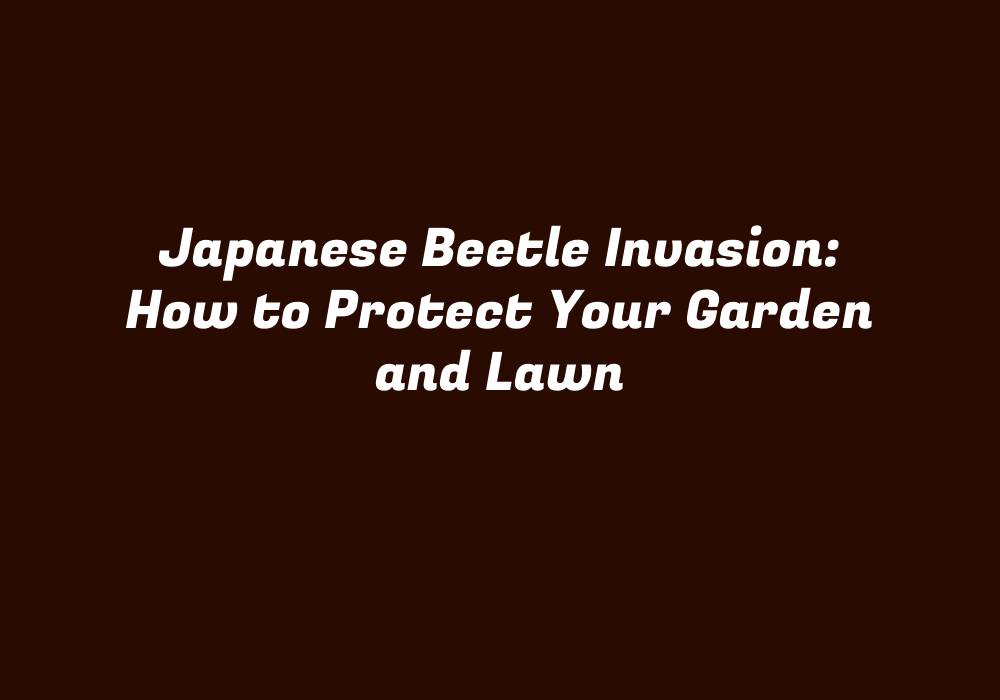Introduction: Japanese Beetle Invasion
The Japanese beetle, commonly known as Popilla japonica, is an invasive species that originated from Japan. It has now spread across various parts of North America and continues to cause significant damage to gardens and landscapes due to its voracious appetite for plant life.
Understanding the Japanese Beetle
Adult Japanese beetles typically grow between 0.35 to 0.6 inches (10mm to 15mm) in length, and they have a metallic sheen on their wing covers, which can appear either greenish-bronze or coppery in color. They are known for their preference of various plants, including roses, cherries, grapes, apple trees, and more.
Damage Caused by Japanese Beetles
Japanese beetles have a voracious appetite for plant material. They feed on both leaves and fruit, causing severe defoliation of plants. Their feeding habits not only weaken plants but also increase their vulnerability to other pests, diseases, and environmental stresses. In some cases, their feeding can even result in death for the affected plant.
Protecting Your Garden and Lawn from Japanese Beetles
1. Barrier Methods
One of the most effective ways to prevent Japanese beetle damage is by using physical barriers. You can place wire cages around susceptible plants to protect them from adult beetles during feeding season (usually between May and September). These cages should be placed before any signs of beetles appear in your area.
2. Monitoring and Timing
Keep a close eye on the presence of Japanese beetles in your garden or lawn to better understand their population levels and activity. This will help you determine when to start protective measures and when to take action against the pest. Early detection allows for more effective management and minimizes damage.
Cultural Control Measures
1. Attract Beneficial Predators
Encourage the presence of natural predators, like birds and ground beetles, which prey on Japanese beetle larvae. Provide a habitat that supports their survival and feeding requirements, such as dense plant cover, water sources, and nesting materials.
Chemical Control Methods
1. Pesticides
Use chemical pesticides when cultural control measures are inadequate or when an infestation is too severe. Consult with your local agriculture extension agency for advice on selecting the most suitable and environmentally-friendly insecticides to use against Japanese beetles.
Combining Different Control Methods
1. Integrated Pest Management (IPM)
The best approach is usually a combination of both cultural and chemical control measures. The ultimate goal of IPM is to find the right balance between effective pest management while minimizing negative environmental impacts.
Conclusion
Protecting your garden and lawn from Japanese beetle invasions requires understanding their behavior, life cycle, and preferred plant species. By utilizing a blend of cultural, physical, and chemical control methods, you can minimize damage to your plants and maintain a healthy landscape. Remember, early detection and timely action are key factors in managing these destructive pests.
It’s essential to maintain an ongoing monitoring and management strategy for effective Japanese beetle control. By taking a proactive approach and utilizing various techniques, you can successfully prevent or manage infestations in your garden and lawn throughout the growing season.
